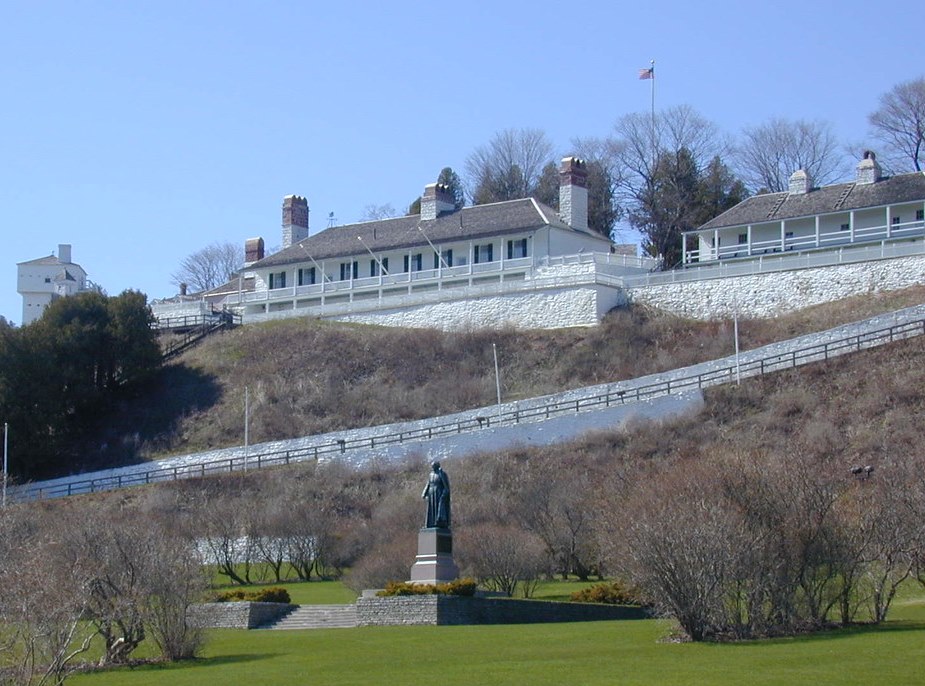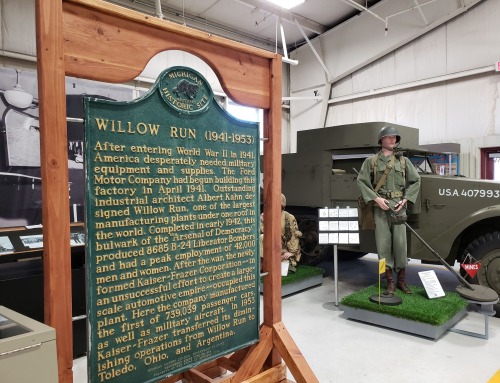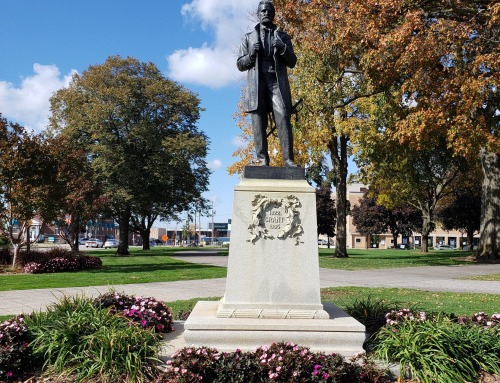Since the Treaty of Ghent was signed in December of 1814, I decided to write about what happened in Michigan during the war. When I started my research, I learned there was a lot more to report than I had anticipated, so this month, I will just focus on the Mackinac area during the war of 1812. I will discuss what happened further south in the Detroit area at a later date.
The War of 1812 had more than a few conundrums. Named after one year, it actually lasted from 1812 to 1814. The primary reason for the war, which was impressment of American sailors, ceased to be an issue before the war officially began, and the biggest battle of the war, the Battle of New Orleans, occurred after the peace treaty had been signed on December 24, 1814 in Ghent, Belgium. Unlike other wars in American history, where Michigan played a supporting role with no battles fought on its homeland, during the War of 1812, cities like Detroit and Mackinac Island saw a fair amount of fighting, and unfortunately not much of it was successful on the part of the Americans.
One of the first engagements of the war was the Siege of Fort Michilimackinac on Mackinac Island. In modern times, this is known as Fort Mackinac, distinguishing it from the original outpost which still exists on the tip of the Lower Peninsula. Once learning of the war, the British commander of upper Canada, Major Isaac Brock sent a canoe party to British Captain Charles Roberts. Roberts was on St. Joseph Island, less than 100 miles away from Michilimackinac, and he left to capture Fort Mackinac as soon as he received his orders.
At the time, Fort Mackinac was a log fort on a limestone ridge overlooking the southeast harbor of the island. The Americans had 61 artillerymen under Lieutenant Porter Hanks stationed at the fort. After hearing rumors of unusual activity, Hanks sent scouts to investigate, including fur trader and militiaman Michael Douseman. This contingent was captured by the British and Captain Roberts learned just how uninformed Lt Hanks was. The British quickly moved towards Mackinac Island. On the morning of July 17, British forces landed on the north end of the island two miles from the fort. This area is now called ‘British Landing’. The British moved a cannon to the ridge above the fort and fired a single round. Next they sent a message under a flag of truce, demanding immediate surrender.
Since Lieutenant Hanks was caught completely by surprise, he gave up without a fight. Every soldier in the garrison was taken prisoner, then released on the condition that they would not fight for the remainder of the war. It was a tough, embarrassing blow for the Americans in Michigan. Civilians on the island were given a choice: either take an Oath of Allegiance to Britain or leave the island.
Not much happened in Michilimackinac in late 1812, nor in 1813. The Americans did manage to establish a blockade of goods up to the island which lead to two miserable winters for the British encamped there. A new commander arrived on the island in May of 1814, Robert McDouall.
Wanting to strengthen his position on the island, McDouall fortified the defenses of the existing fort and decided to build a stockade and blockhouse at the highest point on the island where the British had fired on the fort 2 years earlier. He not only used his soldiers to construct this new defensive structure, he also required the villagers to help move rocks and build the facility that was named Fort George. McDouall also trained his soldiers harder than any of the other previous commanders on the island.
Out east, the American forces were holding on against the British. Emboldened by this, Americans in the west tried to go on the offensive, and in July 1814, Americans tried to retake Mackinac Island as a part of a larger campaign to harm the trading alliance between the British and the Natives. Plans were made in Detroit, and on July 3, a squadron of five American ships under Commodore Arthur Sinclair headed toward the Island. On their way, they stopped at St. Joseph Island, which had been held by the British but was abandoned in 1812 when they left to take Michilimackinac. The Americans arrived off the shores of Mackinac Island on July 26.
The Americans wanted to have an element of surprise to their attack, but their arrival had been delayed. Because of this, British Lieutenant Colonel Robert McDouall knew of the attack and made plans to defend the island. Without surprise on their side, the Americans bombarded the island, but were unsuccessful, as their artillery fire fell well short of the fort and into the army gardens below. To further complicate this ill-fated attack, a dense fog fell upon the area and the Americans were forced to retreat.
On August 4, the Americans returned, and Lieutenant Colonel George Croghan decided to land on the island near the same place that the British had landed years earlier. The American gunboats bombarded the island again, trying to chase the Natives out of the woods. Instead of waiting to be attacked, McDouall brought most of his men to meet the Americans. They met on a farm belonging to Michael Douseman, who had pledged his loyalty to the British after he had been captured two years earlier. Once again, the Americans were defeated in embarrassing fashion. Thirteen Americans were killed, including Major Andrew Holmes and Captain Isaac Van Horne. Fifty-one Americans were wounded, and two were captured. The Americans fled to their ships and left the fort and the island to the British until the end of the war.
The Americans didn’t want to completely leave Mackinac to the British, so they continued to block their enemies from getting any supplies. They left two ships, the Tigress and the Scorpion to patrol the water routes used by the British. However, the Americans in the west continued to be outsmarted, and in early September, 1814 a party of Royal Navy sailors and soldiers captured the American gunboats on Lake Huron. It was another attack the Americans never saw coming, and this defeat now left the British in control of Lake Huron until the end of the war.
Though it may not seem likely, based on what happened in Michilimackinac, the Americans were able to defeat the British in the War of 1812. The Treaty of Ghent was signed on December 24, 1814, officially ending the war. The treaty, among other things, required the British to return their captured territory to the United States, including Fort Mackinac. The British withdrew to nearby Drummond Island, where they actually remained until 1828, which is a whole other story.
Much more happened in Michigan during the War of 1812. Be sure to check back next month to learn more about Detroit’s efforts in the war.
Editor’s Note: To learn more about these events, pick up a copy of Beyond the Island by Marie LaPres (a.k.a. Erica Emelander, the author of this piece). Available in the Winter of 2020







Leave A Comment
You must be logged in to post a comment.